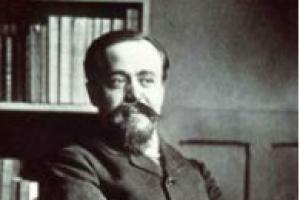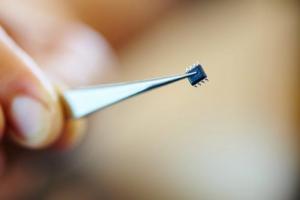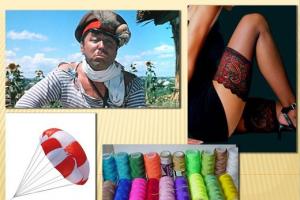When the plant is healthy, insects do not cause much damage to it. Diseases on the tree should be recognized and pests should be controlled.
The damage caused to the tree is visible to the naked eye.
Cherry diseases
| Disease | Symptoms | Treatment |
| Gommoz (or gum therapy) |
Transparent amber drops flow from the trunk, branches, fruits and freeze. This is how the plant tries to heal on its own. | Gomosis appears as a result of plant injuries, improper care, frostbite or pest attacks. If the cause of infection is known, it must be eliminated:
|
| Anthracnose | The causative agent of the disease is a fungus. On fruits infected with anthracnose, dull spots appear, which gradually become coarser and become covered with a pink coating. When the fungus has completely infected the fruit, it mummifies. In humid weather, the disease spreads faster. In a short time, up to 80% of the crop is destroyed. | Fungal spores die under the influence of the drug "Polyram". It is available in granules, diluted in the following proportion: 20 g per 10 liters of water. Trees are treated with the solution before flowering and after harvesting. |
| Moniliosis | Appears on branches and fruits white coating, the damaged areas look burned. Moniliosis appears after flowering. The disease also causes gray growths to form on the tree bark, the fruits do not ripen or rot and fall off, and frozen drops of gum appear on the branches. | Affected branches with fruits are cut off and burned. Fallen leaves are also destroyed. The diseased tree is treated with fungicidal solutions: “Kuprozan”, “Oleokuprit”, “Kaptan”. This needs to be done several times: during the swelling of the buds, during the flowering period, after harvesting, before wintering. |
| Rust on leaves | Spots appear on the leaves that look like rust. At the initial stage, the affected area is small, but as the disease progresses, it constantly expands. The tree becomes weaker and reacts worse to temperature changes. Productivity drops sharply. | Affected and fallen leaves are burned. The tree is treated with copper oxychloride: 40 g of the drug per 5 liters of water. Spraying is carried out twice: before and after flowering. IN preventive measures After harvesting, the tree is treated with 1% Bordeaux mixture. |
| Coccomycosis | The causative agent of the disease is a fungus. Pale or bright red spots appear on the outside of the leaves; white-pink spores of the fungus are visible on the inside. Greens and buds quickly turn yellow and fall off. The fruits lag behind in development, do not ripen and fall off. | Cherry trees are infected by spores of a fungus that lives in fallen leaves, so they need to be burned in the fall. Digging up the soil around the tree before wintering is mandatory. Spraying with the drug "Poliram" is carried out during the period of swelling of the buds, immediately after flowering and after harvesting. |
Some experts are confident that it is pointless to fight coccomycosis and moliniasis, since the diseases will reappear on the tree. It is better to plant a young hybrid tree that is resistant to these diseases.
Cherry pests and their control
To maintain the attractiveness of the garden for many years and harvest a bountiful harvest every year, you need to protect the trees from pests. By recognizing the disease and the type of pest, you can easily get rid of the problem. Traditional methods and insecticides will come to the rescue.
Butterfly pale Brown, capable of laying eggs in cracks in the bark or on the buds of the plant. During the active growing season, in the spring, when the buds open, cherry shoot moths hatch from eggs. It eats buds and destroys young leaves, the shoots dry out. After flowering has passed, the caterpillars crawl onto the soil and pupate. This period lasts no more than a month; butterflies emerge from the pupae and lay new eggs.
Due to their cold resistance, cherry shoot moth eggs remain on branches and bark until spring. After harvesting, you need to additionally spray the plants with insecticides. This will kill the eggs and reduce the possibility of reinfection.
How to deal with this pest:
- During the swelling of the buds, spray the trees generously with insecticides. Effective solution: 1% aqueous DDT emulsion.
- Re-treat with preparations during the hatching of caterpillars: Karbofos 0.2% or Chlorophos 0.2%.
- Loosen the soil under the trees during cherry moth pupation (the first half of summer), this has a detrimental effect on the larvae and pupae.

Adult moth
This pest resembles an ordinary house fly in appearance. Its length does not exceed 4 mm. They have white longitudinal stripes on their backs and green eyes. The back of the head and thighs are yellow. Winters in top layer soil and last year's foliage, in a yellow cocoon, shaped like a barrel.
It hatches in the spring and feeds on the excrement of cherry aphids until the fruits ripen. After the berries appear, they drink their juice and lay eggs in them. The larval development process is short, no more than 20 days. Adults feed on the pulp of the fruit before pupation. When the time comes, they crawl out. And the fruits that served as their home dry out or rot.
These are common cherry pests, and fighting them is not difficult; for this you need:
- Plant early varieties of cherries and treat them before flowering with insecticides.
- In the summer months and at temperatures above 15`C, loosen the soil around the trunk, spill the soil with Karbofos (0.2%) or Chlorophos (0.2%).
- Spray insecticides several times a season. The last spraying should be done two weeks before harvesting.
- In autumn, dig up the soil around the tree to a depth of 1020 cm.
Use liquid bait to attract flying pests. Place jars of kvass or beer under the trees or hang them on branches. The liquid will begin to ferment, and its smell will attract flies. They will fall into a trap from which they will not be able to escape.

Common pest of cherry trees
Pipe screwer
A small bug that gnaws holes in the buds, climbs inside through them, eats away the pistil and stamens. The larvae of the cherry borer mutilate the fruits and eat the seeds. As a result of the attack of this pest, the harvest is reduced by at least 40%.
Adults of the cherry tubeweed have golden-green elytra and light yellow larvae.
When the crop ripens, the female weevils hatch from a cocoon in the soil and gradually climb up the trunk to reach the fruit. There they gnaw holes in the pericarp and lay eggs. The caterpillars eat the pulp of the seeds, when satisfied, crawl out and fall to the ground. There they pupate and overwinter, this is repeated every year.
Weevils (cherry weevils) - dangerous pests cherries and control of them occurs with the help of industrial insecticides. Traditional methods can only be used for preventive purposes.
The fight against these pests consists of several stages:
- Before the flowering period, the soil around the trees is dug up or plowed. The weeding depth is at least 20 cm. A regular aerator is not suitable for this; you need to dig it manually.
- When the buds swell and bloom, trapping belts need to be hung on the trees. Which from time to time need to be cleaned of stuck beetles by shaking them onto a plastic sticky film spread around the tree.
- After flowering ends, a few days later you need to treat the plant with insecticides. It is best to use a 0.3% Karbofos solution.

Pipeworm loves to feast on cherry buds and fruits
Black cherry aphid
Such cherry pests can completely destroy the tree. A colony of aphids settles on inside leaves, eats them up, and multiplies rapidly. On affected trees, leaves turn black, curl and dry out. Aphids also eat fruits in search of food. A large colony before the flowering period can damage young shoots, which will lead to their freezing and death.
To get rid of black cherry aphids you need:
- Attract as many as possible to the garden ladybugs. These are natural enemies of aphids.
- Spray the leaves with a strong soap solution (1 piece per 10 liters of water) or an infusion of ash (1 kg of ash per 6 liters of water).
- Control aphid spreaders garden ants. You can burn the anthill or pour boiling water into it. Ants do not tolerate soda; its solution can be spilled over the entire area.
- In summer, during the ripening of the crop, spray regularly natural means(infusion of herbs or potato tops).
- Treat with Iskra or Komandor if other means do not help.

Aphids damage cherry leaves
Slimy sawfly
The larva is greenish-black, covered with mucus. Favorite place to live - fruit bushes and trees. The slimy sawfly builds small nests inside a tree or soil, at a depth of 5 to 15 cm. In the spring it pupates and crawls out. It lays eggs on the outer surface of the leaves and the hatching larvae of the slimy sawfly eat them. In autumn, the pupation process is repeated. The presence of the sawfly is immediately visible: the leaves of the plant are covered with ulcers and holes.
How to deal with this insect:
- In early spring and autumn, weed the ground around the trees to a depth of at least 15 cm.
- Spray with insecticides: “Trichlormetafos” (10%), “Karbofos” (10%), “Chlorophos” (3.8%).
- Use soda and soap solutions for spraying every 2 weeks.
- Whitewash the trees.
- In spring and autumn, water the bud with Chlorophos (3.8%). In March, before the buds open, and in early September, after the last harvest.
Winter moth
It lives in the soil and can fly to the site from the neighboring forest. The winter moth is a nondescript beige moth with transverse dark lines on its wings. It is capable of completely depriving the harvest.
Large green-yellow caterpillars with a brown head gnaw out buds, destroy ovaries and flowers, entwining them with cobwebs. After this, they descend into the ground and pupate. So the winter moth waits for autumn. In September and October, butterflies hatch from the cocoon and lay eggs near the buds.
The winter moth is a frost-resistant insect; it can tolerate night frosts down to -15 `C.
You need to combat the winter moth in a comprehensive manner:
- After harvesting, dig up the soil around the plant. This will kill unformed butterflies.
- Clean the cherry bark from new growths and moss. Remove ovipositors in cracks in branches, apply trapping belts, and whiten the base of the tree.
- In the spring, before the buds open, spray with a broad-spectrum insecticide. It is best to use “3ov” and “Dnok” products.
- After the buds open, treat with additional products: Lufox, Calypso, Actellik.

The moth destroys the foliage of the cherry tree
codling moth
This type of pest pupates in the spring shortly before the formation of the ovary. Codling moth butterflies lay eggs on cherry leaves, and the caterpillars that hatch after a few days bite into the fruit and climb inside. They eat the pulp, make longitudinal moves and leave excrement. Having reached maturity, the caterpillars come to the surface, hide in the bark of a tree and hibernate.
Damaged fruits are limp and have purple spots with oozing gum.. They are not suitable for further processing and consumption.
Effective for pest control:
- Spraying with insecticides "Chlorofos" and "Karbofos".
- Loosening the soil around the tree during the pupation period.
- Destruction and collection of missing fruits.
Linden slimy sawfly ( Caliroa annulipes. Family Tenthredinidae- real sawflies). The name of the pest is the linden slimy sawfly, but this does not mean that it only affects linden trees. Its voracious larvae, which simultaneously resemble both slugs and leeches, gnaw through the leaf plate, leaving behind an openwork skeleton. Usually young trees suffer from this pest; it rarely attacks strong adult specimens.
Found everywhere
In Russia, the linden mucous sawfly is found everywhere. The larvae feed on oak, birch, willow, beech and blueberry, gnawing out the tissue between the veins of the leaves, skeletonizing them. This pest lives on trees in thinned out stands, on southern, well-lit slopes. Prefers leaves of the upper tier of the crown and its southern part, outer branches, well-lit individual trees, and is not found in the center of the planting.
It causes the greatest harm in young forests, nurseries, parks, squares, shelterbelts, roadside strips and street plantings.
Older trees are rarely damaged, and predominantly individual well-lit branches are colonized.
Imago
Adult larvae do not descend along branches and trunks to the ground to cocoon, but always fall from the leaves. Imago (adult insects) fly in the first ten days of June. The male and female are small, 4 to 6 mm long, with two pairs of transparent wings. The body is black, shiny, antennae and legs are black. Females lay eggs scattered between the veins on the lower surface of the leaf blade, under the epidermis of the leaves, in cuts made with the help of the ovipositor in the parenchyma of the underside of the leaf - the so-called pockets. The masonry is clearly visible and looks like small brown swellings. Females lay 10–30 eggs on one leaf, and their fertility is 50–70 eggs.
 Linden leaves damaged by slimy sawfly
Linden leaves damaged by slimy sawfly  Linden slimy sawfly larvae
Linden slimy sawfly larvae  The linden sawfly prefers the leaves of the upper tier of the crown
The linden sawfly prefers the leaves of the upper tier of the crown
Life for the larva
Embryonic development lasts 1–2 weeks. When hatching, the larvae gnaw exit holes in the dome of the egg sac through which they pass out. One leaf blade can contain from 2 to 28 eggs, more often 9–14.
The hatched larvae are soon covered with transparent yellowish mucus. They are small at first, but can reach a length of 12 mm. The duration of the larval stage is 15–20 days. The body of the larvae is translucent, dark green, covered with translucent mucus secreted skin. The anterior part of the body is greatly expanded; the larvae look more like small leeches. Previously, entomologists called them sawfly slugs. The head of the larvae is round and light brown. There are 7 pairs of abdominal legs, the last pair of legs on the 10th segment is underdeveloped. During the development period, the larvae molt 5–6 times.
Larvae younger ages They gnaw out the pulp of the leaf from the underside between the veins in small spots, and skeletonize the older leaves entirely, leaving only the network of veins intact. The larvae are inactive and cling tightly to the leaves. Planting into the soil begins at the end of June. The larvae pupate in dense oval cocoons made of soil at a depth of 5–15 cm.
In most regions, two generations of sawfly develop over the summer. Second generation larvae can be detected until mid-September.
High resistance to linden sawfly have large-leaved linden (Tilia platyphyllos Scop.) and l. felt (T. tomentosa Moench.).
Control measures
If larvae are found on the leaves, the plants are treated with an insecticide included in the list of pesticides and agrochemicals approved for use on the territory Russian Federation this year.
Along with other pests, sawflies cause severe, sometimes irreparable damage to garden and vegetable crops. These insects damage fruit and berry bushes, fruit trees, some species settle in cereal crops, destroying agricultural land. Every gardener needs to know how to deal with sawfly in order to protect their harvest.
Cherry slimy sawfly: pest control measures
The cherry slimy sawfly is a shiny black hymenopteran insect that is up to 6 mm long. The larvae are greenish-yellow and have a pronounced thickening in the anterior part. On top they are covered with black mucous secretions.


The larvae overwinter in the soil near a tree at a depth of 15 cm. Insects fly out in late May - early June. Females lay eggs in the leaf tissue, resulting in a brown tubercle appearing on the upper side. After two weeks, larvae form and feed on the pulp of the upper part of the leaf.
In case of mass pest invasions, only veins remain from the leaves. The trees appear to be scorched in appearance.
After a month, the larvae move to the soil for the winter. In dry years, they can remain there for several years without coming to the surface.
The main measures to combat cherry mucous sawfly are spraying trees with chamomile infusion. To prepare it, you need to mix 800 g of dried and thoroughly crushed herbs and 150 g of chamomile inflorescences. Pour 10 liters of mixture warm water, leave for 24 hours, strain, dilute with 15 liters of water, dissolve 15 g grated in the infusion laundry soap. Spraying should be carried out 3 times a week with a break. Treatment should be stopped 2 weeks before harvest.
Pear weaver sawfly: photos and control measures
The pear weaver sawfly is an insect with a black head and a reddish abdomen. The body length of the pear sawfly sometimes reaches 14 mm.


Look at the photo: the wings of the sawfly weaver are covered with dark stripes. The caterpillars are orange-yellow, up to 20 mm long, with two shoots at the end.
The pear weaver sawfly mainly damages pears, but is sometimes found on hawthorn and other fruit trees.
The larvae overwinter in the soil near a tree at a depth of 10 cm. Sawflies fly out in early June. Females lay up to 70 eggs on the underside of leaves. Then larvae emerge from them, which are first located in groups in common web nests, eating away the pulp of the leaf. Later, they are found alone in the leaves rolled up and wrapped in cobwebs, eating them.
When a pear sawfly invades, all the leaves of the tree can be destroyed. In autumn, insects move to the soil for the winter. In dry years, they can remain there for up to several years without coming to the surface.
To combat the weaver sawfly, it is necessary to collect and burn spider nests with its larvae.
Control of yellow gooseberry sawfly
Caterpillars of the yellow gooseberry sawfly cause significant damage to plants in a short time. They destroy red currant leaves and completely eat them. As a result, only thick veins remain, and the bushes can be completely devoid of leaves. In addition, the growth and development of fruits stops - the berries remain small, wither and fall off. The plants themselves, affected by the pest, do not tolerate winter well and may die.
You can see what the gooseberry sawfly looks like in the photo below:


During the period of sawfly pupation, it is necessary to carry out autumn digging of the soil and loosening.
To protect plants from pests, infusions and decoctions of insecticidal plants (garlic, wormwood, tobacco) are also used and sprayed with infusion of ash. In addition, control measures for gooseberry sawfly include manual collection insects, as well as shaking them from bushes onto newspapers or cloth.
For getting good harvest gooseberries should be created on the site from the very beginning favorable conditions for the development of plants so that they themselves can resist pests and...
It is also necessary to remember that it is much easier to introduce pests such as aphids or sawflies, as well as pathogens of various diseases, into the seedling area than to get rid of them. Therefore, before planting, it is necessary to carefully check the planting material.
Control measures for yellow plum sawfly
This insect is a yellow-brown hymenopteran insect with a body length of 5 mm.


As you can see in the photo, plum sawfly larvae are yellowish-brown, up to 9 mm long.
The larvae overwinter in the soil near a tree at a depth of 10 cm, where they then pupate.
Sawflies fly out about 5 days before the flowering of plums, cherries, sweet cherries, cherry plums, apricots and other stone fruits, which they infect.
Females lay eggs in buds and flowers. After a few weeks, larvae appear and feed on the pulp of the ovary. Interior damaged fruits are filled with watery excrement of larvae, which have a sharp unpleasant smell. Each plum sawfly caterpillar can damage up to 6 fruits.
After about a month, the feeding period of the larvae ends. They move to the soil for the winter. In dry years, the larvae can remain in the soil for several years without emerging to the surface.
One of the effective measures to combat the yellow plum sawfly is spraying with marigold infusion. To prepare it, you need to pour 15 cups of dry crushed marigold flowers into 8 liters of boiling water, add 20g of laundry soap previously grated on a coarse grater, mix, leave for 18-20 hours. Spraying with infusion should be carried out 2 times a week, preferably in the morning. Treatment should be stopped 10 days before harvest.
How to deal with slimy sawfly and photos of the pest
The slimy sawfly damages the leaves of stone fruits. Adults have a shiny black body, as well as two pairs of transparent wings, the span of which is 8-9 mm. Body length - 6 mm. The greatest danger is larvae.


Pay attention to the photo: The slimy sawfly has a greenish-yellow body (up to 10 mm long) with a thickening, the front part of which is covered with black mucus.
With the onset of spring, adult insects leave earthen cocoons and lay pale green eggs on the underside of leaves fruit trees. Having hatched, the larvae begin to damage the flesh of the upper side of the leaves.
In the process of dealing with the slimy sawfly, you must dig up the soil in the fall. This event helps to destroy the larvae that have entered it.
Fighting cherry sawfly
The cherry sawfly is a black insect with yellow and white stripes. The body length of the cherry sawfly is up to 10 mm.


Look at the photo: Sawfly larvae are up to 12 mm long, dark green, with a dark stripe on the back.
Cherry sawfly caterpillars damage the leaves of cherries, sweet cherries and other stone fruits.
The larvae overwinter in the soil near the tree at a depth of 25 cm. Insects fly out during the period when the cherry buds open. Females lay up to 70 eggs on the underside of leaves. By the beginning of June, larvae appear, which are first located in common spider nests, eating away the pulp of the leaf. Then they live alone in the leaves rolled up and wrapped in cobwebs, eating them.
In case of mass invasions of the cherry sawfly, all the leaves of the tree can be destroyed.
By August, the larvae move to the soil for the winter. In dry years, they can remain there for two years without coming to the surface.
To combat the cherry sawfly, the soil around cherry, cherry and apricot trees should be dug up. It is necessary to collect and burn spider nests with cherry sawfly larvae.
Apple fruit sawfly: photos and control measures
The apple fruit sawfly belongs to the order Hymenoptera; it reaches a length of 6-7 mm. The body color is yellow below, black above.


As you can see in the photo, the wings of the apple sawfly are transparent with a network of dark veins. The female lays one egg in the receptacle of a flower or bud, having first sawed through its skin with her abdomen. The larvae of the apple sawfly are caterpillars up to 10 mm long, pale yellow in color, and externally reminiscent of the caterpillars of the apple moth.
Apple sawfly caterpillars pose the greatest danger to gardeners, since the pest settles in the ovary of a plant immediately after flowering, after which it destroys the seed chamber. The resulting space (usually in the center of the fruit) is filled by the apple sawfly larva with its gelatinous brown secretions, which have a characteristic odor.
The main measure to combat apple sawfly is to spray the trees with chamomile infusion. To prepare it, you need to mix 800 g of dried and thoroughly crushed herbs and 150 g of chamomile inflorescences.
Pour the mixture into 10 liters of warm water, leave for 24 hours, strain, dilute with 15 liters of water, dissolve 15 g of grated laundry soap in the infusion. Spraying should be carried out 3 times a week with a break. Treatment should be stopped 2 weeks before harvest.
Fighting the pale-legged gooseberry sawfly and photo of the pest
The false caterpillars of the gooseberry sawfly eat the leaves of gooseberries, red and white currants down to the veins. Adult larvae overwinter in dense cobweb cocoons. They burrow into the soil under bushes to a depth of 15 cm. In early spring, they pupate. After the leaves bloom, butterflies appear and lay eggs along the veins on the underside of the leaf. One female can lay up to 150 eggs.


Pay attention to the photo: The false caterpillars of the pale-legged gooseberry sawfly have ten pairs of legs. The larvae are green with a noticeable brown head.
During the summer, 2-3 generations of sawflies appear.
To combat the pale-legged gooseberry sawfly, it is recommended to dig up and loosen the soil under gooseberry and currant bushes, rake and remove fallen leaves in a timely manner.
You can shake sawfly caterpillars into a bucket and then destroy them.
In case of a massive pest invasion, it is recommended to spray with infusion of calendula and dandelion roots. To prepare it, you need to mix 400 g of calendula flowers and 150 g of dandelion roots. Pour the mixture into 10 liters of boiling water, leave for at least 2 hours, strain. Spraying with infusion should be carried out immediately after its preparation. The first spraying should be carried out from the moment the buds open until the buds separate, and the second - immediately after flowering. If new sawfly larvae appear after harvesting, you can carry out another spraying.
The plum sawfly causes a lot of trouble for gardeners. He meets on fruit crops ah the entire European territory. The pest can also be found in Central Asia. The target is all kinds of plums. At the same time, adult pests in the form of hymenoptera insects are safe for the crop; they eat the juice and pollen of the inflorescences. The larvae damage the fruits, in which ideal development conditions are created for them: constant humidity and a stable temperature sufficient for growth.
Types of pests and damage caused
Plum sawfly - photo of a mature female
The black plum sawfly or Haplocampa minuta appears during the swelling of plum flowers that have not opened their petals. As soon as they begin to color pink color, a black insect with a brilliant tint of color flies out. An adult sawfly has membraned wings. Translucent with brownish veins. The larvae, yellow or pale green pseudo-caterpillars hidden in cocoons, overwinter in the ground.
Pupation occurs in the spring, when the soil warms up to a depth of 50 mm at 8°C and above. At favorable climate(+15°C and warmer) female sawflies lay one egg at a time in the incisions of the buds (up to 30 eggs). As soon as the ovary begins to form, the larvae hatch. In search of food, they penetrate inside the fruit. The food of first instar caterpillars is the pulp of the ovary. For the offspring of the second and third instars, the nutrient medium is the segment of the fetus directly at the seed. The spoiled plum falls off.

The yellow plum sawfly (another name is Hoplocampa flava L.) also feeds on the fruits of cherries, cherry plums, sweet cherries, apricots, and sloe. The name lives it up appearance: yellow and light brown shades predominate in the coloring of the abdomen, chest and head. Yellow color mustache and legs. Females are slightly larger than males: 6 mm and 5 mm, respectively. The summer of yellow sawflies falls on flowering early varieties cherry plums, plums They are just as dangerous to the crop as their black “relatives”. Adults live in communities in nests made of cobwebs in the foliage of a tree, while pupation occurs in the soil layer.
Attention! The degree of danger to sawfly crops can be judged from statistical data. One pest spoils up to 6 fruits. In an unfavorable period, when there is a massive insect attack on fruit crops with different fruiting periods, they can destroy 60% or even 80% of the crop. In this case, the best plants are affected.
Prevent the spread
Knowing how to deal with plum sawfly, you can minimally reduce the risk of damage to fruit crops. Characteristic feature It is considered that the pest is locally affected, as well as a reduction in its numbers in places with dry soil litter. The sawfly is least present in artificially irrigated gardens with a naturally dry climate.

The gardener must be attentive - it is important to notice the sawfly in a timely manner
- If you have yet to lay out a garden, you need to choose a place for it with good natural drainage of groundwater and precipitation, as far as possible from a wild forest belt with fruit trees.
- An effective preventive measure is loosening the soil in the root zone, within the radius of the projection of the tree crown. Deep digging of soil between planted trees late autumn And in early spring. This is how it is destroyed most of pupae and larvae prepared for wintering.
- You can reduce the number of insects by first shaking the tree and collecting pests on a film, oilcloth, or tarpaulin previously spread under the tree. This is done in cloudy weather before flowering begins. The collected living “material” is destroyed by burning, boiling, and burial in the soil to a depth of at least 0.5 m.
- Periodically inspect the fruits, removing damaged ones, using the same shaking. Or pick off berries that are deformed, disproportionate in size, with a ribbed texture, preventing the appearance of larvae.
- It is practiced to abundantly water the soil layer during the flowering period with the following composition: dilute 50 g in 10 liters of water wood ash. Or treat the soil under the tree, as well as the tree itself, with the following composition: dissolve 0.7 kg of urea in 10 liters of water. In this way, pests overwintering under the plant in the ground are destroyed even before their mass outbreak. But the treatment must be done before the buds open, so as not to damage the delicate greenery of the crown.
A little chemistry

Chemical irrigation of crops is carried out zonally, in places of greatest concentration of insects. The drugs Metafos, Karbofos (10%), Benzophosphate (10%) are used. The first treatment with insecticides against adults is carried out two days before flowering, at the stage of changing the color of the buds: they become pink and begin to open. Rogor, Gardona, Tsidial will be effective. The second time the attack is performed against the larvae, when the petals have fallen (Tarzan, Insegar, Novaktion). After the third application, Metaphos or Phosfamide is used in such a way that the plum crop will be harvested no earlier than a month after applying the preparations.
By the way. For large-scale lesions chemical methods the struggle can be repeated. It is important to follow the manufacturer's recommendations.
Herbs to help the gardener
The fight against plum sawfly comes down not only to the use of poisons. Don't underestimate herbal formulations.
Each processing method is effective in its own way. Insecticides, so disliked by many gardeners, during mass destruction Tree pests come to the fore in the fight for the harvest. But if you start it on time, you can get by folk remedies and simple agrotechnical measures. Don't forget about the birds. Feeding in winter and arranging houses in early spring helps catch insects. You need to take the time to inspect your garden more often. Then the pest with the formidable name “sawfly” will not become a threat to the harvest in the garden.
The cherry slimy sawfly is widespread throughout the non-chernozem zone. Damages cherries, sweet cherries, and less often plums, pears, rowan trees, bird cherry, and hawthorn. The adult insect (5 - 6 mm) is black, with two pairs of transparent, slightly darkened wings.
Larvae are greenish-yellow(9-11 mm long), covered with sticky black mucus. They look like small leeches with a thickened front part of the body ( table 48).
The larvae overwinter in the soil at a depth of 2 - 3 cm, under the crown of a tree, at a distance of about 1 m from the trunk. In June the larvae pupate in cocoons, and in July the adult insects emerge.
The female makes an incision with her ovipositor on the underside of the leaf and lays an egg in it. A swelling forms at the site where the egg is laid, and a brown tubercle is visible on the upper side of the leaf.
Table 48. Cherry slimy sawfly:
1
- adult insect;
2
- egg;
3
- cocoon with a pupa inside;
4
- pseudo-caterpillars that skeletonize leaves;
5
- false caterpillar
After 1-2 weeks the larvae hatch, which skeletonize small areas of leaves on the upper side. In this case, the soft parts of the leaf are eaten away and the veins remain intact. Damaged leaves turn brown and from a distance give the impression of being burned by fire.
In September The larvae go into the soil to a depth of 2-15 cm. In the non-chernozem zone, the sawfly develops in one generation.
As a result of damage by larvae, the leaves dry out. and fall off. When foliage is severely eaten, the trees weaken and the formation of flower buds for next year's harvest decreases.
Damage to young trees leads to a decrease in shoot growth. Sawflies are most dangerous to young seedlings.
How to deal with cherry sawfly
1)
loosening and digging tree trunk circles in autumn and spring to destroy wintering larvae;
2)
spraying with infusions of tobacco, shag, wormwood, soda ash(70 g per 10 l of water) or 50% trichlorometaphos-3 (10 - 20 g per 10 l of water), 10% or 30% karbofos (75 - 100 or 25 - 30 g per 10 l of water ) with the massive appearance of larvae, which usually occurs after cherry harvest.








